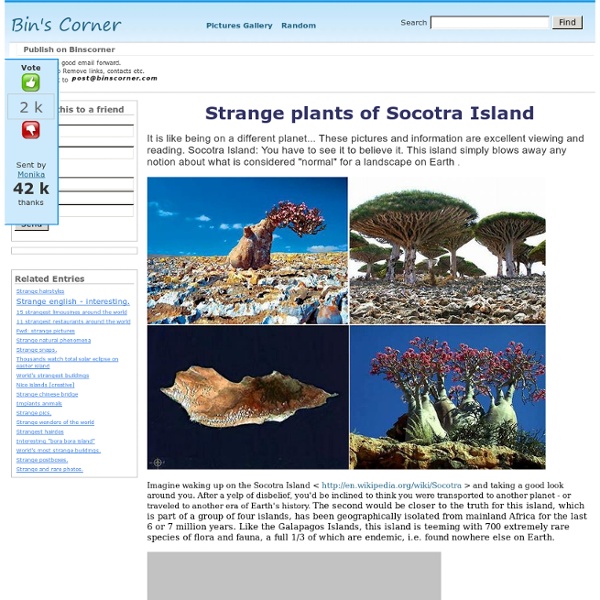Strange plants of Socotra Island
Imagine waking up on the Socotra Island < > and taking a good look around you. After a yelp of disbelief, you'd be inclined to think you were transported to another planet - or traveled to another era of Earth's history. The second would be closer to the truth for this island, which is part of a group of four islands, has been geographically isolated from mainland Africa for the last 6 or 7 million years. Like the Galapagos Islands, this island is teeming with 700 extremely rare species of flora and fauna, a full 1/3 of which are endemic, i.e. found nowhere else on Earth. The climate is harsh, hot, and dry, and yet - the most amazing plant life thrives there. The name Socotra is derived from a Sanskrit name, meaning "The Island of Bliss"... Was the famous Chtulhu myths creator aware of these forbidding mountains with their hauntingly weird flora (think of plant mutations from his "The Colour Out of Space")?
Huge Stash of Marijuana Found in Ancient Tomb
The world’s oldest stash of marijuana has been found in far western China, according to an article in the Journal of Experimental Botany. An ancient Caucasian people, probably the Indo-European-speaking Yuezhi whose fair-haired mummies keep turning up in Xinjiang province, seem to have buried one of their shamans with a whopping 789 grams of high-potency pot 2,700 years ago. That’s about 28 ounces of killer green bud, worth perhaps $8,000 at today’s street prices, and enough to keep Harold and Kumar happy for a couple of days. “It was common practice in burials to provide materials needed for the afterlife,” lead author Ethan B. Russo, a practicing neurologist and prominent medicinal-marijuana advocate based in Missoula, Mont., tells the Canadian Press. But the researchers couldn’t tell if the weed was meant to be smoked or eaten. (Top image: Testing the 2,700 year old marijuana for THC content. Source: Fox News 12.03.08 From the Journal of Experimental BotanyAbstract
Related:
Related:



